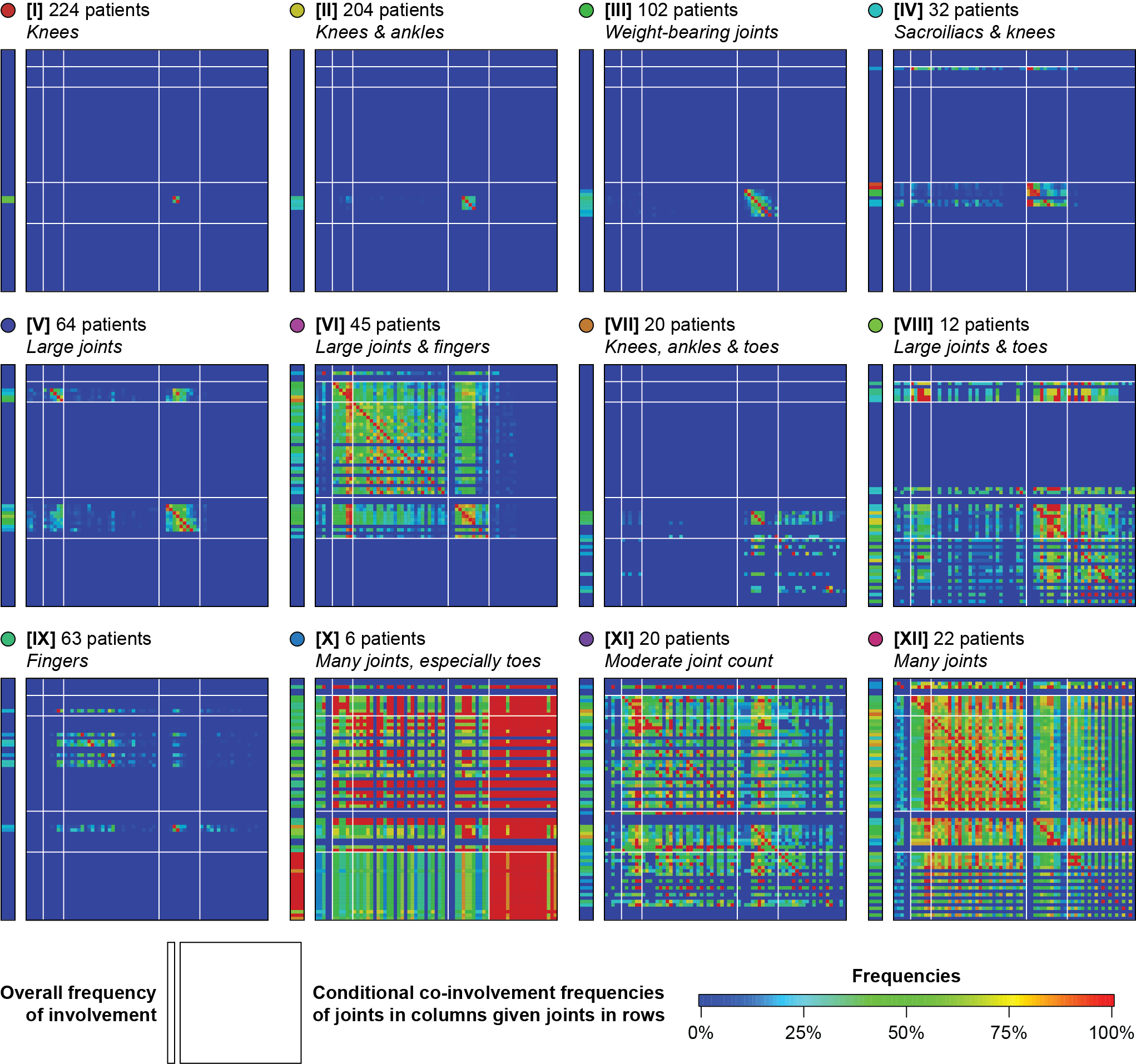Session Information
Session Type: Abstract Submissions (ACR)
Background/Purpose:
JIA encompasses a set of heterogeneous diseases with chronic joint inflammation. Although the ILAR criteria consider joint counts, they do not reflect specific joint involvement patterns. We sought to study these patterns, through unsupervised pattern recognition techniques, to better characterize homogeneous subpopulations of children with JIA.
Methods:
Principal component analysis was conducted on baseline joint involvement data from 807 treatment-naive patients satisfying the ILAR criteria to identify composite variables, or principal components (PCs), that distinguish patients from each other. Cluster analysis was conducted on patient PC scores to identify signatures of joint involvement.
Results:
4 PCs were identified that explained 46% of variance among patients. The PCs summarized (1) overall joint count, (2) finger vs. toe involvement, (3) large vs. small joint involvement, and (4) SI joint involvement. On these PCs, 12 distinct signatures were identified whose “fingerprints” or defining characteristics are depicted in Figure 1. These signatures described joint involvements based on clinically meaningful combinations of characteristics given by the PCs. The signatures were clearly able to distinguish homogeneous patient subpopulations both within and between ILAR subtypes based on joint involvement (Figure 2).
Conclusion:
Our analysis recovered distinct patterns of joint involvement in an assumption-free manner that will be useful in defining homogeneous patient subpopulations within and across the ILAR subtypes in JIA.
Figure 1: “Fingerprints” or joint co-involvement frequencies for each signature. Vertical heat maps represent overall frequencies of joint involvement among patients in each signature. Square matrices represent frequencies of involvement of joints in columns given the involvement of joints in rows.
Figure 2: Relationships between the signatures and ILAR subtypes. Heat maps (outermost rings) depict PC scores for each patient. The innermost ring depicts the ILAR subtype composition of each signature and signature composition of each ILAR subtype. Ribbons link patients between signatures (left) and ILAR subtypes (right).
Disclosure:
S. W. M. Eng,
None;
M. Van Veenendaal,
None;
A. M. Rosenberg,
None;
K. Oen,
None;
Q. Morris,
None;
R. S. M. Yeung,
Novartis Pharmaceutical Corporation,
2.
« Back to 2014 ACR/ARHP Annual Meeting
ACR Meeting Abstracts - https://acrabstracts.org/abstract/patterns-of-active-joint-involvement-in-jia/


